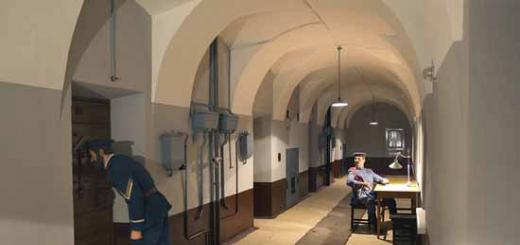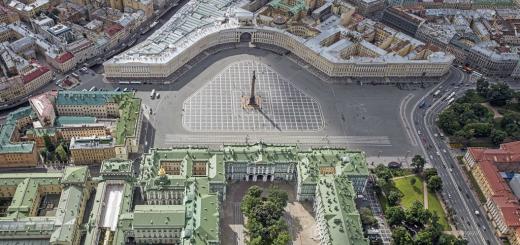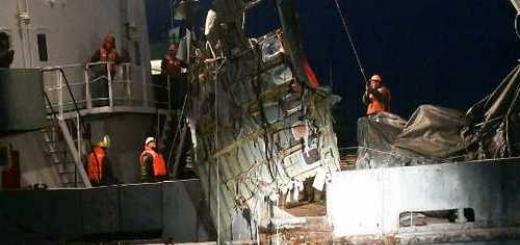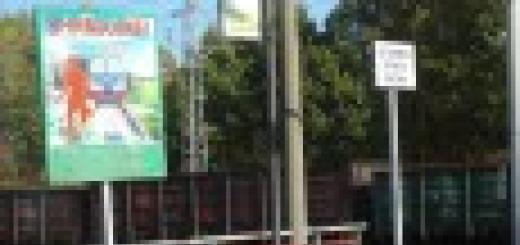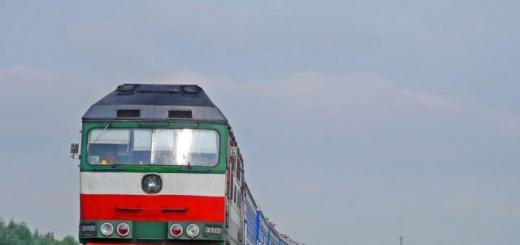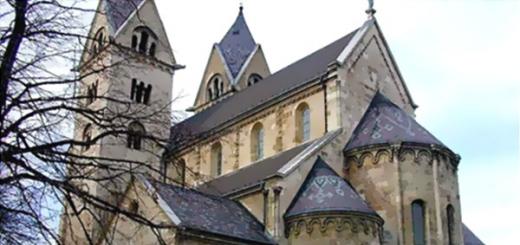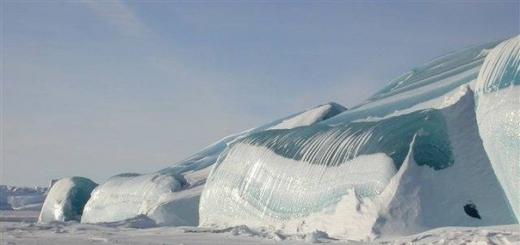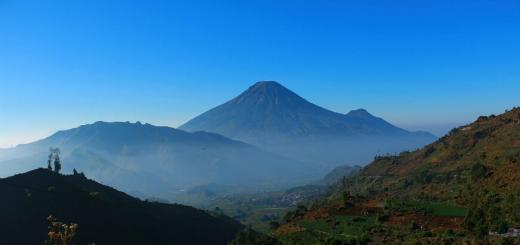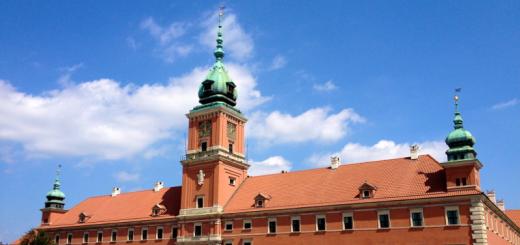Where is the cruise port of San Juan
Cruise port San Juan is the largest in The Caribbean and has 2 cruise terminals.
Transit liners dock at the Old San Juan Cruise Terminal, which is located in the city center and has 6 berths. Liners whose route starts from San Juan, except for the Carnival Victory, use the Pan American Pier terminal. Its location is slightly worse, but it is closer to the airport.
How to get to the cruise port of San Juan
There are direct connections between the airport and the Old San Juan Cruise Terminal. At the airport, take the T5 bus at stop 1022. The bus fare is $ 0.75. Children under 2 years old are free. The entrance to the bus is only through the front door, payment is at the entrance, the driver does not give change. Travel time is 53 minutes, the bus leaves every half hour. Please note that this route does not operate on Sundays. It will be possible to get from the airport to the cruise port only by making 3 transfers, the journey will take about 2 hours. We strongly recommend taking a taxi on this day. The taxi ride from one area to another is fixed. Drivers only turn on the meter when driving in one area. A taxi ride from the airport to the cruise port will cost around $ 30-35.

San Juan shops and cuisine
The main shopping streets in the old town are Christ, Fortaleza and San Francisco. Here you can buy souvenirs popular among tourists: wooden figurines of saints, coca frogs, carnival masks made of coconut and papier-mâché, lace, musical instruments and, of course, the excellent rum Bacardi, Barrilito and Don Koo. Pay attention to the local coffee, which has been supplied to the Vatican since the 19th century.
The modern and very large Plaza las Americas shopping center is 15 minutes' drive from the cruise terminal. This is one of the best shopping centers throughout the Caribbean! There are a lot of different shops, a good assortment, constant promotions and discounts, and very polite staff. You can get there by taxi and bus with one change.
We advise you to try Lechon roast suckling pig. Before frying on a spit, it is marinated for 24 hours, due to which it acquires an absolutely delicious taste. Soups are the staple of food in Puerto Rico. One of the most famous soups is black bean soup. Another classic soup is chicken and rice. It may taste slightly different depending on the restaurant. The third classic soup is fish soup, cooked with fish heads and tails.
Try also all kinds of fruits: mango, guava, papaya, avocado, acerola (Barbados cherry), carambola. Bananas are the most popular side dish served in any restaurant. And this is not just a raw fruit, but fried green bananas. The national drink in Puerto Rico is, of course, rum. 80% of all rum consumed in the United States comes from this island.
Routes, excursions, transport in the port of San Juan
A tourist train runs through the old town. Interestingly, you can ride it for free. Opening hours are Monday to Friday from 7 am to 7 pm, and from Saturday to Sunday from 9 am to 7 pm. The train has 3 different routes, all of them start at stop # 1, which is across the street from the cruise terminal. The name of the route is located on the front of the cart under the glass.

What to see in the vicinity of San Juan
The largest rum factory in the world, Bacardi, is located 18 km from the capital. Here you can see the whole process of making, visit the Museum of the Bacardi family, and also taste and buy the rum you like. Opening hours from Monday to Saturday from 09:30 to 16:30, Sunday from 10:00 to 16:00. Cost from $ 15 per person. You can get there from the ferry pier No. 4.
25 km east of the capital is the country's best nature reserve El Yunque - the Caribbean National Forest.
Most the best beaches near San Juan located 6 km from the pier to the east - Cornado and Ocean Park. They can be reached by public transport... Cornado beach is located a little closer to the terminal, you can get there by buses T3 or T21 every day, except Sunday, the journey takes about 50 minutes. Ocean Park Beach can be reached by buses T5, T21, D53 or T3 every day except Sundays. The journey takes about an hour.
San Juan currency
The national currency of Puerto Rico is the US dollar. The US dollar is often referred to as the "peso" on Puerto Rican price tags.
In all major settlements there are many ATMs, some of them, designated ATH ("a todas horas" - "any hour"), located in banks, supermarkets, casinos and most large hotels) work around the clock. Stores with sales tax refund ( tax free) in the country is not.
Where to stay before and after the cruise?
For a stopover in port before your cruise, try Airbnb, where you can rent a full-fledged apartment for the price hotel room... By registering using our link you will receive coupon for 2100 rubles. for your first stay from 4500 rubles!
Top Things to do in and around San Juan Port
These hotels are selected by us based on our own experience and the experience of other cruise travelers. The determining factors when choosing: proximity to the cruise terminal of San Juan, the ability to quickly and easily get to the ship, as well as the airport or train station.

Puerto Rico is considered almost 51 states of America, i.e. is under the control of the United States, but is not an integral part of it (the action on the territory of the US Constitution is limited, the supreme power belongs to the US Congress, but the territory has its own system of self-government).
In short, American visas (or as we have ESTA permits) had to be shown before visiting this state. Because of this, a huge queue lined up before disembarking along the entire length of our Independence boardwalk.
Coming ashore, we were greeted very good weather... We decided with friends to visit a real tropical forest, which is located an hour's drive from the capital on the territory national park El-Yunque. As the guide promised, a real tropical jungle with waterfalls was waiting for us.
Immediately at the port and formed our mini-group. This is usually the case - while we find out the prices and the proposed routes, several people from the ship themselves come up to us and ask where we are and whether it is possible with us. We are always happy to share our trip with the cruisers.
We rented a minibus for 8 people, the price was slightly knocked down - at first it was offered at $ 50, agreed at $ 45 per person. After the forest they promised to drive us around the city, take us to the beach and show us Old San Juan.
On the way to the reserve we drove through the capital. San Juan is a city of contrasts, there are high-rise buildings, there are also not very shiny, to put it mildly, neighborhoods.
After a while we found ourselves in the rain forest of the El Yunque National Park. Mount El Yunque, where the reserve itself is located, rises 575m above sea level. Of course, here you can get acquainted with the whole variety of extraordinary Caribbean plants. Even millennial trees and exotic plants come across. The minibus climbed a steep road surrounded on all sides by centuries-old tropical plants. The guide told us in detail what the tree is called.
There were several stops during the tour. The first park introduced us to one of the many waterfalls in this park. Not Iguassu, of course, but it's still pretty interesting to see the local sights.
Everywhere in the park you can find small waterfalls, so it is very pleasant to be in the forest, cool and fresh from them. But there are frequent rains, so it is recommended to take something to cover with you. We were lucky, not a drop fell!
Nature appears here in its original form - all around there is lush vegetation. Nice backdrop for any movie about ancient world, about dinosaurs. By the way, no poisonous reptiles are found in these tropical forests.
Next, we climbed the Yokahu Observation Tower, which offers a breathtaking view of the entire surrounding forest and even in the distance you can see the coast.
Such an easy, pleasant walk through the rainforest turned out, it was quite curious to visit among the centuries-old trees and plants, and visit the local waterfalls.
After the jungle, we headed back towards the city, drove to one of the beaches to look at the powerful waves of the Atlantic Ocean.
We admired the ocean a bit and continued sightseeing tour across San Juan. We didn’t leave the bus, as we had already walked through the tropical forest and just wanted to follow the pictures from the window. We looked at the Capitol (Capitolio de Puerto Rico) - the Legislative Assembly of Puerto Rico, which houses the Senate and House of Representatives.
Fort San Felipe del Morro (Castillo San Felipe del Morro), named after the Spanish king Philip II (Felipe II; 1527-1598), is a powerful fortified fortress located on the northwestern tip of the island.
The Telurico Totem, a giant column of black granite and ceramics by the Puerto Rican artist Jaime Suárez, was erected in 1992 to commemorate the 500th anniversary of Columbus's discovery of the New World.
After the end of the excursion, according to tradition, we went on the liner for lunch and then went for another 1.5 hours to walk along the streets of San Juan before sailing. Nice town with ancient architecture. Traders do not sleep - they offer souvenirs right on the road, not far from the liners. We just wandered along the streets, plunged into the atmosphere, so to speak. We accidentally wandered into an interesting salon of fashionable designer clothes. We met the hostess, a very nice girl.
For those who do not like to travel on foot, you can choose another method of transportation, for example, by horse-drawn carriage or mini-train.
And we're back on board, thanks for the ride! Nice island, interesting.
San Juan (Spanish: San Juan Bautista, John the Baptist) is the capital and largest administrative center in Puerto Rico. According to the 2000 census, it has a population of 433,373, making it the 42nd largest city under US government. San Juan was founded by Spanish colonists in 1521 who named it Ciudad de Puerto Rico (City of Puerto Rico). It is not only the most Old city in Puerto Rico, but also the oldest European city in the United States, even older than St. Augustine in Florida. The capital of Puerto Rico is almost the oldest city (in 2nd place after Santo Domingo in Dominican Republic) European colonists in the Americas. There are several historic buildings in San Juan; the most notable include Fort San Felipe del Morro and Fort San Cristobál, as well as La Fortaleza, the largest continuously used in the Americas executive mansion.
Today, San Juan is one of the most important ports, industrial, financial, cultural and tourist centers of Puerto Rico. The population of the metropolis, including San Juan and the municipalities of Bayamon (Spanish Bayamón), Guaynabo (Spanish Guaynabo), Catano (Spanish Cataño), Canovanas (Spanish Canóvanas), Cahuas (Spanish Caguas), Toa Alta (Spanish Toa) Alta), Toa Baja (Spanish Toa Baja), Carolina (Spanish Carolina) and Trujillo Alto (Spanish Trujillo Alto), has about 2 million inhabitants - about half of the population of Puerto Rico lives and works in this area. The city has hosted many important sporting events, including the 1979 Pan American Games, 1966 Central American and Caribbean Games, World Baseball Classic and 2006 Caribbean Series.
Pre-Columbian period
The history of Puerto Rico in the period preceding the arrival of Christopher Columbus on this land is not fully understood. Everything that is known about him came from archaeological excavations and oral stories of the first Spanish travelers. The first book to comprehensively describe the history of Puerto Rico was written by Fray Iñigo Abbad y Lasierra in 1786, 293 years after the Spanish first visited the island.
The earliest settlers of Puerto Rico were the Ortoiroids, an ancient culture. Excavations carried out in 1990 found the remains of a primitive man, whose age dates back to about 2000 BC (4000 years ago). The remains were named "Puerto Ferro man". Between 120 and 400 AD, representatives of the Igneri Indian tribe from the Orinoco River region arrived on the island South America... Between the 7th and 11th centuries, representatives of the Arawak tribes began to inhabit the island, who founded the Taino culture, and by about 1000 AD this culture began to dominate the island, until the arrival of Columbus in 1493.
Period of Spanish colonization
When Christopher Columbus landed on the island on November 19, 1493, during his second voyage to the shores of America, the island was inhabited by Indians who called themselves Taino. The Taino called the island "Boriken" (Spanish Borikén), which was later interpreted by the Spaniards as "Borinken" (Spanish Borinquen). Initially, the Spaniards named the island San Juan Bautista in honor of St. John the Baptist, but ultimately the island was named Puerto Rico, which means "rich port". Colonization of the island by the Spaniards began in 1508, when from Santo Domingo (the island of Haiti) arrived with a detachment of conquistadors Juan Ponce de Leon (Spanish Juan Ponce de León), who founded the city of Caparra. The administrative center of the island eventually became Caparra, which was moved to a new place in 1521 - the port of Puerto Rico. The name San Juan passed to the capital of the territory and to the small island "Old San Juan", which is now part of the capital. In 1508, the Spanish conquistador Juan Ponce de Leon became the first governor of the island. A geographic curiosity is associated with the name of the state and its capital. The island was originally named in the tradition of the Spanish colonialists San Juan after a Christian saint. The capital, accordingly, received the name Puerto Rico (Rich Port), but later the cartographers "confused" the names.
The island was soon colonized by the Spanish. African slaves were brought into the island as free labor to replace the rapidly declining Indian population forced to work for the Spanish crown. In the end, the Tainos became completely extinct as a result of the diseases that the Spaniards and Africans brought with them, as well as the harsh living conditions in which they found themselves. Puerto Rico quickly became an important fortress and port of the Spanish Empire in the Caribbean. However, at the end of the 17th-18th centuries, the more prosperous territories of the mainland were still at the center of colonization, and not the island, impoverished due to the decline in the population. To protect against the threat from the European enemies of Spain, various forts and fortresses gradually arose on the island, such as La Fortaleza (Spanish for La Fortaleza), Fuerte San Felipe del Morro (Spanish for Fuerte San Felipe del Morro) and San Cristobal (Spanish for Fuerte) San Cristóbal). The French, Dutch and British made repeated attempts to capture Puerto Rico, but were defeated in attempts to occupy the island for a long time.
In 1809, at a time when the troops of Napoleon I occupied most of the Iberian Peninsula, and the First Spanish Revolution was in full swing, a collection of populists from the Spanish city of Cadiz declared Puerto Rico an overseas province of Spain with the right of representation at the Spanish court. The first representative of the island to the Cadiz Cortes, Ramón Power y Giralt, died shortly after arriving in Spain. With the adoption of the Cadiz Constitution in 1812, when Spanish territories were divided into provinces, the Puerto Ricans were granted conditional citizenship.
On August 10, 1815, a royal decree was issued in Spain encouraging Spaniards and other non-Hispanic Europeans loyal to the Spanish crown and the Roman Catholic Church to settle on the island, which opened the way for Puerto Rico to trade with other countries. This was the beginning of the growth of the island's agricultural economy, where sugar, tobacco and coffee became the main export products. The island began to be settled by immigrants from Germany, Corsica, Ireland, France, Portugal and Canary Islands, fleeing severe economic turmoil in Europe and attracted by the possibility of free entry to the island. However, these minor concessions and rights were soon canceled. After the overthrow of Napoleon I, an absolute monarchy returned to Spain, which abolished the Cadiz constitution and returned Puerto Rico to the status of a colony, a symbol of the unlimited power of the Spanish monarchy.
On June 25, 1835, the wife of the Spanish king Ferdinand VII, Maria Cristina, being at that moment the regent of Spain (1833-1840), abolished the slave trade in the Spanish colonies. In 1851, the Governor of the island, Juan de la Pezuela Cevallos (Spanish: Juan de la Pezuela Cevallos), founded the Royal Academy on the island. fine arts, which educated school teachers, developed teaching methods, and organized literary competitions that contributed to the intellectual and literary development of the island. In 1858, Samuel Morse installed the first telegraph on the island in the city of Arroyo.
Life in Puerto Rico in the second half of the 19th century took place against the backdrop of a struggle for autonomy. The 1860 census showed that the island's population was 583,308. Of these, 300 406 (51.5%) people were white, the rest belonged to other races. Of these, the overwhelming majority (83.7%) belonged to the poor. The island's agricultural development was hampered by lack of roads, primitive tools and natural disasters such as hurricanes and droughts. The economy also suffered from high tariffs and taxes imposed by the Spanish royal government. On September 23, 1868, an uprising for independence broke out in the city of Lares, known as "El Grito de Lares", which was quickly suppressed. The leaders of this uprising, Ramón Emeterio Betances and Segundo Ruiz Belvis, are considered the fathers of the Puerto Rican nation in modern Puerto Rico. Later, a political movement for independence arose under the leadership of Roman Baldorioty de Castro, and at the end of the century, a movement led by Luis Muñoz Rivera. In 1897, Muñoz Rivera and his associates spoke to the liberal Spanish government for the granting of autonomy to Cuba and Puerto Rico. The next year, in 1898, an autonomous government was declared for a short period. The charter of autonomy was accountable to the governor of the island, appointed by Spain. The governor had the right to annul any decision of the local government and participated in parliamentary elections.
Period of American rule
On July 25, 1898, during the Spanish-American War, American troops invaded Puerto Rico, landing in the municipality of Guánica. As a result of the war, Spain was forced to cede Puerto Rico, as well as Cuba, the Philippines and the island of Guam under the Treaty of Paris in 1898. Puerto Rico entered the 20th century under the military rule of the United States, including a governor appointed by the President of the United States. In 1917, under the Jones-Shafroth Act, the citizens of Puerto Rico were granted US citizenship, and this status is still valid. Since World War I, many Puerto Ricans have served in the US Army. Natural disasters and the Great Depression worsened life on the island. Some politicians, such as the leader of the Puerto Rican Nationalist Party, Pedro Albizu Campos, have advocated independence for the island. He was subsequently arrested twice and jailed for subversive activities against the American administration on the island. The first democratically elected governor of Puerto Rico, Luis Muñoz Marín, also initially advocated the independence of the territory, but, seeing a serious economic recession, accompanied by an increase in crime and popular discontent, he chose the status of an associated territory as an intermediate stage on the path to independence.
During the reign of the Roosevelt-Truman administrations, the nature of the internal administration of the territory changed as a result of a compromise between various political forces. The change culminated in the appointment in 1946 by President Harry Truman of the first Puerto Rican-born Governor Jesús Toribio Piñero Jiménez. In 1947, the Americans granted Puerto Rico the right to elect its own governor. In 1948, Luis Muñoz Marín was elected as governor of Puerto Rico in a democratic election and remained in office for 16 years until 1964.
Since then a large number of immigrants from the island moved to the main territory of the United States in search of better life... If in 1945 there were about 13,000 Puerto Ricans in New York City, by 1955 their number was already about 700,000, and by the mid-1960s their number exceeded one million.
On November 1, 1950, Puerto Rican separatists Griselio Torresola and Oscar Collazo attempted to assassinate President Truman. The consequence of this incident was Truman's consent to hold a referendum on the island over Puerto Rico's own constitution. As a result of the approved constitution on July 25, 1952, Puerto Rico received its current status of an associated territory. During the 1950s, the island experienced rapid industrial growth, transforming Puerto Rico's economy from an agricultural to an industrialized one.
Starting in the 60s, the Puerto Rican independence movement rose again, which even turned into an armed struggle under the leadership of Filiberto Ojeda Rios.
Puerto Rico is now large tourist center with a developed pharmaceutical and manufacturing structure. The political status is still not fully determined, and therefore in last years various plebiscites are held on the island.
Flora and fauna
According to 1998 data, the flora of Puerto Rico comprised 239 different plant species, 16 species of birds and 39 species of amphibians and endemic reptiles were seen in the fauna. The Rico frogs that live here, known as the coca (Eleutherdactylus coqui), are a favorite symbol of the island, although their presence can only be felt by sound and few tourists can see them - the largest coca is no more than 5 centimeters in length ... These small creatures manage to make such loud sounds of "ko-kii" (hence their name) that even a small colony of "croaking" frogs can deafen a person. Local residents even have their own term for this - "hellish chanting". Humid tropical caribbean National Forest also known as "El Yunque" is the primary habitat for these frogs. El Yunque is one of the few surviving tropical rainforests in the Caribbean. Forest landscapes are decorated with picturesque waterfalls. Here is a real kingdom of ferns. The forests of El Yunque are home to endangered species such as coca. Thanks to the leaves of the Cycropia plant, which thrives on the island. The forest is home to about 225 tree species, 100 fern species and about 50 orchid species. Due to the huge diversity of flora, El Yunque has received the status of a Biosphere Reserve under the auspices of the United Nations. A few hours' drive from El Yunque, there is another biosphere reserve, Guanica, which belongs to the classification of dry tropical forests. In this reserve, there are zoological species that live only in Puerto Rico. Here you can find 750 plant species, seven of which are on the verge of extinction. The greatest value for Puerto Rico is represented by mangrove forests and coral reefs, which are almost unaffected by poachers.
Geology
The geological structure of the island consists of volcanic and igneous rocks, formed in the period between the Cretaceous and the Eocene epoch of the Paleogene period, on top covered with later rocks of the Oligocene epoch, and even later with carbonates and sedimentary rocks. The oldest rocks are estimated to be approximately 190 million years old (Jurassic) and are located in the municipality of Sierra Bermeja in the southwestern part of the island. These rocks may represent parts of the oceanic crust, and appear to have come from the Pacific Ocean.
Puerto Rico is located on the border of the Caribbean and North American plates and is currently tectonically deformed by the action of these plates. Such a transformation can cause earthquakes and tsunamis, which, together with landslides, pose the greatest geological hazard on the island and the northeast. Caribbean... The last major earthquake in Puerto Rico occurred on October 11, 1918, estimated at approximately 7.5 on the Richter scale. The epicenter of the earthquake was at the bottom of the sea off the coast of the municipality of Aguadilla, which caused a tsunami.
The Puerto Rico Trench, 120 km north of the island, is the largest and deepest oceanic trench in Atlantic Ocean... It is located on the border of the Caribbean and North American plates. The trench is 1,754 km long, about 97 km wide, and the maximum depth is 8380 m.
Culture
The national symbols of Puerto Rico are the small bird of the tanager family Spindalis portoricensis, the Thespesia grandiflora flower and the Cotton tree (Ceiba pentandra). The unofficial national animal is the Tiny Frog (Eleutherdactylus coqui).
Puerto Rico is quite rich, for a little island nation, cultural traditions, including such manifestations as folklore (dances, music, songs, colorful religious processions and performances), painting, literature, theater, amateur cinema, etc.
First written "" mention theatrical performance on the island dates back to 1644, when Bishop Damian de Aro, appointed by the Vatican, mentioned in his letter that upon his arrival from Spain he was met local residents, who prepared for him dances, bullfights and theatrical comedy.
The first printing press was brought to the island in 1806, which gave a powerful impetus to local printing and literature.
Such stars as Ricky Martin, Jennifer Lopez, Daddy Yankee, Wisin y Yandel, Mark Anthony originate from the island. It is believed that it was in Puerto Rico that the reggaeton musical style originated.
Representatives of Puerto Rico constantly participate in the Miss World and Miss Universe beauty contests. Puerto Rican women won the Miss Universe competition 5 times (1970, 1985, 1993, 2001, 2006), second only to the USA in the number of nominations, and once they won the Miss World competition (1975). In this competition in 2005, the representative of Puerto Rico took second place.




Cotton tree
Useful information for tourists about San Juan in Argentina - geographical position, tourist infrastructure, map, architectural features and attractions.
San Juan is the capital of the province of the same name, which is located in the west of Argentina. The city was originally founded on the banks of the San Juan River by the conquistador Juan Khufre in 1562, and named after John the Baptist. The city was moved 2.5 km to the south in 1593, after it was flooded. The San Juan earthquake of 1944 was the main Argentine tragedy of the 20th century. More than 10 thousand people died, some cathedrals and many other buildings were destroyed. The new Cathedral of St. John opened in 1979, and immediately became one of the main attractions of San Juan. And later the famous observatory named after Felix Aguilar was created. Argentine President D.F. Sarmiento was born in this city. An airport, a theater and a local radio station are named after him; there is also a monument dedicated to him and a house-museum in the city. it modern city with wide streets, with many different types of trees, irrigated by canals, which is why it is also called an oasis city.
Tourism in San Juan is centered around wine production and tasting. The city is also popular for unusual rock formations in places such as national park Ischigualasto National Park), including Valle de la Luna. Tourists are attracted to this city by the annals of the Triassic period located here, which are considered one of the most significant in the world. Another attraction is the Difunta Sanctuary of Correa, located 64 km from San Juan. There are several interesting museums. Archaeological Museum is located in La Laya, it is about 25 km from the city center. It represents the culture of many peoples who lived in San Juan before the arrival of the Spanish in 1560. You will be able to see an invaluable collection of Native American artifacts, rock paintings and other items from the Tulum Valley history over the past 8500 years. The Franklin Rawson Museum of Fine Arts is located in the city center. There you can see collections of paintings and sculptures, prints and drawings made by the greatest masters. V history museum Agustina Gnecco presents items from the 18th and 19th centuries, Creole silverware and historical collections of numismatics and philately. The Natural Science Museum is located in a former train station and is known for its collection of dinosaur fossils, found mainly in the Ischigualasto Valley. There is even a House of Tango, where you can see the history and development of Argentine tango in the 20th century.

